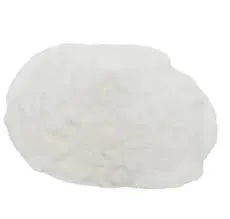
Dec . 19, 2024 09:40 Back to list
hpmc for putty powder
Enhancing Performance with HPMC for Putty Powder
Hydroxypropyl Methylcellulose (HPMC) has emerged as a critical additive in the formulation of putty powder, particularly in construction and renovation applications. This cellulose ether, derived from natural cellulose, offers various beneficial properties that improve the performance of putty products, making them more effective and user-friendly.
Understanding HPMC
HPMC is a white, odorless powder that is soluble in water, forming a clear, viscous solution. It is a nonionic polymer, meaning it does not carry an electrical charge, which makes it highly stable and versatile. This compound is widely used in various industries, including pharmaceuticals, food, and construction. In the context of putty powder, HPMC provides several significant advantages.
Key Benefits of HPMC in Putty Powder
1. Improved Workability One of the primary functions of HPMC in putty formulation is to enhance workability. Its ability to retain water and improve consistency allows for smoother application. This characteristic is especially beneficial for contractors and DIY enthusiasts who require a product that is easy to spread and manipulate. A well-formulated putty with HPMC can be applied effortlessly, reducing labor time and increasing productivity.
2. Water Retention HPMC’s water-retention properties are crucial for the drying process of putty. By keeping the mix moist for a longer period, HPMC prevents premature drying and cracking. This extended work time allows users to apply multiple layers without the worry of the base drying out too quickly, which can result in uneven surfaces and compromise the final finish.
hpmc for putty powder

3. Enhanced Adhesion The introduction of HPMC into putty powder formulations positively influences the adhesion properties. Improved adhesion ensures that the putty bonds effectively to various substrates, including concrete, brick, and drywall. This characteristic is essential for ensuring the durability and longevity of the putty application, reducing the risk of peeling or chipping over time.
4. Thickening Agent HPMC acts as an effective thickening agent, providing the desired viscosity and consistency to the putty mix. This property allows manufacturers to control the flowability of the product, ensuring that it does not become too runny or too thick. The right viscosity improves the performance during application and ensures an even spread across surfaces.
5. Anti-Sagging Properties In vertical or inclined applications, sagging can be a consistent issue. HPMC helps mitigate this by providing a thixotropic effect, which means the putty will hold its shape under gravitational forces. This allows for the application of thicker layers without the risk of the material sagging or dripping, thus preserving the aesthetic appeal and functionality of the finish.
Conclusion
In summary, Hydroxypropyl Methylcellulose (HPMC) plays a vital role in the formulation of putty powder, enhancing various properties that are crucial for effective application and performance. Its ability to improve workability, water retention, adhesion, viscosity, and anti-sagging qualities makes it an indispensable ingredient in modern putty formulations.
As the construction industry continues to evolve, the demand for high-performance materials will only increase. By utilizing HPMC in putty powder, manufacturers can deliver products that meet these rising expectations, ensuring that both professionals and homeowners achieve superior results in their projects. The future of putty applications looks promising with HPMC at its core, driving innovation and quality in construction materials.
-
Versatile Hpmc Uses in Different Industries
NewsJun.19,2025
-
Redispersible Powder's Role in Enhancing Durability of Construction Products
NewsJun.19,2025
-
Hydroxyethyl Cellulose Applications Driving Green Industrial Processes
NewsJun.19,2025
-
Exploring Different Redispersible Polymer Powder
NewsJun.19,2025
-
Choosing the Right Mortar Bonding Agent
NewsJun.19,2025
-
Applications and Significance of China Hpmc in Modern Industries
NewsJun.19,2025







